In November 2019, the £1.5bn competition to build up to three Fleet Solid Support Ships was suspended, an update is due before the end of this year.
It is understood that Defence Secretary Ben Wallace halted the competitive tendering process because bidders were “not compliant” with cost.
The Ministry of Defence have provided an update on progress on various projects, this was done as a response from the Ministry of Defence to follow-up questions to the Defence Secretary following a session of the Defence Committee on the 23rd April.
A statement regarding the suspended Fleet Solid Support Ships competition reads as follows:
“Following the decision taken to cancel the competition in November 2019, the MOD has been considering the most appropriate way forward for the Fleet Solid Support ships, looking at all aspects of the programme, including the requirement, procurement approach, market analysis and platform options. This work is complex and also needs to consider wider reviews underway across the Department and Government, as well as any impact of Covid-19, all of which may impact on the timeframe for re-starting the competition.
We will therefore take the necessary time to ensure all of these aspects are thoroughly reviewed and considered before we restart the competition. Until this work has completed it is too early to speculate where these ships may be built or how the future procurement will be run. We expect to provide an update on progress in the Autumn.”
The National Audit Office recently released a report titled ‘Carrier Strike – Preparing for deployment’, the report examines the MoD’s management of the programme since 2017 and the risks towards achieving Carrier Strike’s full capabilities, delays to the Fleet Solid Support Ship programme of between 18-36 months are posing risks to regenerating UK carrier strike capability say the NAO, you can read more about that here.
The Ministry of Defence earlier said in a statement:
“It is clear that the current approach will not deliver the requirement. We are now considering the most appropriate way forward for the procurement project.”
The UK Defence Journal believes this work should stay in the UK.
Recently, Harland & Wolff joined forces with Navantia to form ‘Team Resolute’, a shipbuilding collaboration which will bid for the Fleet Solid Support Ship programme to be built in Belfast.
As part of this, Harland and Wolff has signed an exclusive Teaming Agreement with Navantia, with BMT participating as an exclusive subcontractor in the Programme.
“Team Resolute combines 159 years of shipbuilding experience at one of the UK’s biggest shipyards, including the two largest dry docks in Europe, with unrivalled auxiliary design experience from UK designer BMT and a world-leading auxiliary shipbuilding track record from Navantia. As set out in the UK National Shipbuilding Strategy, the UK Government is seeking to strengthen the UK’s sovereign shipbuilding capability and prosperity, while driving cost and production efficiencies. Team Resolute offers a low risk and value for money UK solution for FSS based on recent and current experience designing and building comparable ships for other navies.”
If successful in the bid, the firms say that Team Resolute will inject significant investment into local economies across the whole of the UK through ship design and construction.
The firms claim their bid has the following benefits for the UK:
- Prosperity for the UK. It will re-establish a skills base for UK shipbuilding in Northern Ireland, strengthening the UK’s sovereign shipbuilding capability and economic prosperity. Transfer of Navantia’s cutting edge digital shipyard knowledge to Harland & Wolff will support the modernisation and availability of this UK sovereign asset for FSS and beyond.
- UK industrial strength for a UK FSS programme. It will provide the UK Government with the sovereign industrial capability to make FSS a successful UK programme. It will use a world beating British design from BMT, build at Harland & Wolff’s facilities in Northern Ireland, and incorporate wider UK fabrication, materials and equipment.
- A formidable British design pedigree. BMT is the only company to have been involved in the design of QEC and MARS Fleet Tanker Programme. This experience provides the best possible foundation for delivering an FSS design that will comply with the project requirements and provide the capability necessary to complete the Carrier Strike Group.
- The ideal partnership for assured FSS delivery. BMT’s unique design experience will reduce development time. Harland & Wolff’s and Navantia’s joint unparalleled dry dock capacity will minimise the FSS ships entry to service for the Carrier Strike Group. Navantia’s risk management experience with Australian and Spanish Navies will assure delivery to cost, time and quality.
John Wood, CEO of InfraStrata, said:
“This partnership has the capability and credibility to disrupt the UK defence shipbuilding duopoly that currently exists, providing much needed competition in the defence sector to ensure value for money and guaranteed delivery. Team Resolute will create a more level playing field when competing for upcoming defence contracts. It will also provide Harland & Wolff with a strong proposition to tender for contracts in in the oil & gas, cruise & ferry, commercial and renewable sectors. We have always selected our partners carefully. In Navantia, we see a long term partner not only within the defence sector – we are also in advanced discussions for further teaming agreements in relation to offshore wind farms.”
Great to be working with two fantastic partners in Navantia and BMT on various Defence opportunities and launching Team Resolute #INFA pic.twitter.com/RFDGBgFGXg
— John Wood (@JohnWoo64494325) May 26, 2020
Abel Méndez, Director of International Defence & Security, Spokesperson of Navantia commented:
“It is clear that under a new management team, Harland & Wolff is a shipyard that is forward-thinking, agile and ready to do business. We are excited about this new collaboration and the opportunities it will bring for both partners.”
Rob Teasdale, Business Development Director of BMT, said:
“BMT is excited to be part of Team Resolute with leading shipyards Harland & Wolff and Navantia to provide a dedicated partnership for UK’s Future Solid Support (FSS) ships. This new cooperation for Team Resolute, under which the three companies will work together on the FSS project, will lend our globally renowned ship design capabilities on a world leading capability for UK’s defence and national security requirements. We look forward to working with Harland & Wolff to modernise and strengthen the UK’s sovereign shipbuilding capability. The combination of BMT’s experience across the maritime sector and our heritage in ship design is the ideal pedigree to bring large and challenging projects to successful fruition. With the reopening of the contest anticipated later this year, BMT stands ready with Harland & Wolff and Navantia to offer a modern approach to the FSS program that will contribute to sovereign shipbuilding and prosperity for the United Kingdom for years to come.”


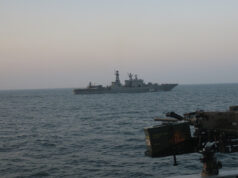
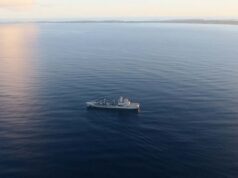
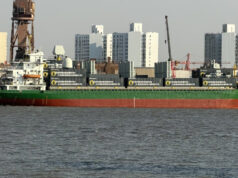
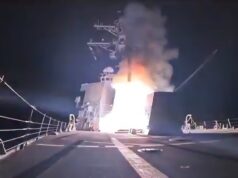
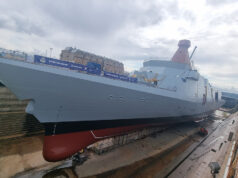


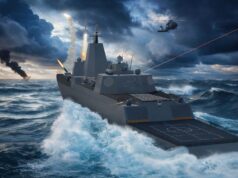
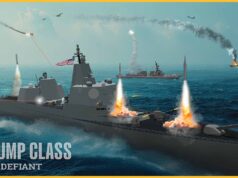
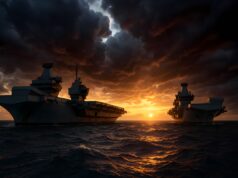

It says it has the two largest dry docks in Europe, so can the carriers use them and what are the pros and cons if they can.
I believe either UKDJ or STRN did an article a while ago on QEC dry docking options in detail. Regarding H&W the obvious bonus is an appropriate sized dry dock already exists, which saves a lot of time and money. It’s also a great investment in a deprived part of the UK.
However, the downsides outweigh the benefits. The dock might be there, but none of the facilities are. There’s not much of an experienced workforce, and it’s a long journey from Portsmouth for emergency docking. There’s also the long term sustainability of the yard compared to Cammel Laird, Rosyth, or a new dock in Portsmouth.
H&W is very local to the Northern Ammunition Jetty though for emergency docking that presumably would be without weapons on board.
Here’s the STRN article Callum mentioned
https://www.savetheroyalnavy.org/dry-docking-the-royal-navys-aircraft-carriers-what-are-the-options/
If having Navantia involved is good enough for the USN its good enough for us, especially as it would be a BMT design and built in Belfast.
With FSS, replacement for Argus (hopefully), and other future RFA and RN vessels there is no reason H&W couldn’t have a constant drumbeat of orders. Cost control when you have all your eggs in one basket might be an issue though.
Exactly this. I don’t think the government sees it as a priority anymore but here’s hoping that as part of their New Deal, they provide a serious boost to industry by expanding defence spending
The problem is all those ships being built at H&W deprives existing successful yards like Rosyth and CL of potential work. UK shipbuilding, especially defence shipbuilding, isn’t a big enough market to sustain so many yards.
Does it really make sense to try and develop a fourth major yard when Cammel Laird is sat with an experienced workforce, commercial success, and existing RFA maintenance contracts?
Rosyth is only successful because other RN contracts. They don’t have the capacity to build this ships when they are already building type 31. The only UK options appear to be Cammel Laird and H&W.
For H&W to work we need a steady stream of support ships so 3 FSS, a hospital ship or 2, replacement for argus, the bay class and if I dare to dream the albon class if they are not scrapped. There should be enough demand for RFA ships to keep a 25 year cycle going for a single ship yard providing they don’t become lazy, inefficient and try to fleece the government for every ship
This is exactly my point: to make H&W sustainable would mean depriving shipyards that are already developed of future work. If H&W get all of the ships you’ve just mentioned, what’s left for CL or Rosyth to build?
One of the identified flaws in British shipbuilding was “boom and bust”: Poorly planned procurement resulting in lots of simultaneous orders that exceed capacity, followed by a scarcity of orders that causes yards to collapse. We need to avoid that cycle and think long-term.
The Clyde is safe for the next 2 decades. Rosyth is good until ~2027 and then needs either more T31 or a replacement. CL is a perfect fit for FSS, which would then set up nicely for future large hull orders like RFAs or assault ships.
Agreed Callum, for a number of different reasons Cammell Lairds on the Mersey is the completely obvious choice.
Yes, this is the issue. The volume of work is just not there to sustain another yard. I cannot see a requirement for new RFAs beyond 2 x FSS and eventually the 3 Bays. A new hospital ship is unlikely, LSS may well not happen, Argus will not be replaced and ditto the LPDs.
By awarding FSS to H&W the Government gives a short-term shot in the arm to Belfast with much publicity no doubt but with nothing to follow it up. Meanwhile other more viable yards are deprived of work and then end up going to the wall, the worst possible scenario.
Why reward Spain? That’s the issue. I dont want my money going to a rogue NATO State. BMT have backed the wrong horse. So be it.
If the government intends to borrow due to very low-interest rates, then it clearly makes sense to invest it here in the UK.
This would be a very positive starting point.
Most of those in power, and many of those who are not, believe in market fundamentalism. Requirements/needs are put to the market and the market determines outcomes. That’s the doctrine. Odd then that in this case where the requirement was put to the market and the market determined that it couldn’t be done for the price specified so the requirement was pulled. In order for the market to come up with a solution some or all of the variables, time, cost, specifications would have had to have been changed. But flying in the face of market doctrine the government pulled the requirement. So perhaps, at least in this case, the market isn’t king after all.
That’s a very long way of saying that sometimes you have to ignore doctrine. Building ships for either the RN or the RFA should be about more than just the final product. Jobs, skills, local economies and so on. I think that we should build here, there will be increased costs and this should be reflected in the defence budget, but the theory is that as the money is spent locally (nationally), on wages, taxes, suppliers, the positive effect on the UK’s economy would more (much more) than make up for the extra costs involved.
Another benefit is that it would strengthen the Union and retain a local capability for the UK. Also initially at least, an experienced workforce could be recruited from elsewhere in the UK. The basic facility is there in Belfast so it would be wonderful to see a proud name revived.
Call me biased-I know…
£1.5bn is a lot of money so I find it a bit odd that there would be such a massive undefined variable in this whole equation namely will that budget fund 2 or 3 ships. Surely the MoD must have a better grasp of reasonable cost than whether each ship will cost £750m (2 ships) or £500m (3 ships).
A little bit dated but you see my point.
Cost: 363 million euro (480 million USD)
Built: 2011–2014
https://en.wikipedia.org/wiki/HNLMS_Karel_Doorman_(A833)
I’m a fan of the KD but is that comparable (honest question)? Now that we need to support carrier strike I assume that the FSS will need very large armoured munitions spaces potentially to keep a 36 F-35B air wing supplied for high sortie rates.
I do have a constant desire to get more versatility, operating efficiencies (cost savings) and value for money from our future fleet by consolidating down to fewer more flexible classes of ships e.g. I’d love Bays, Argus, hopefully the still planned LSS and possibly even Point Class to be consolidated down to a single class not unlike KD (or maybe BMT Ellida – https://www.savetheroyalnavy.org/in-focus-the-bmt-ellida-multi-role-and-logistics-vessel-concept/) but this high-end FSS class is one area where I can see that very specialist and expensive capabilities might mean they need to be a dedicated class. Another bugbear of mine is the next-gen MCM/Rivers/Echos where I really wish timings and BAE contractual arrangements would have allowed us to explore something like the BMT Venari 85 concept for a unified class that could fulfil all those roles and more rather than the Rivers.
Back to topic, maybe KD does have sufficiently big armoured munitions space to be appropriate for the RN FSS role. Can anyone comment on that?
I suspect what’s going on is a comprehensive review of the future logistics and amphibious fleet. I’m sure selling the LPD’s is on the cards. They are expensive to operate and are vulnerable in a contested landing where losses will be very likely. A larger number of cheaper, smaller LDS’s might make more sense. Argus needs replacing, we need one or two LPH and at least 2 FSS. No doubt the MOD are going to ask industry to put all the functionality in a single hull for £250M ?
Sorry, I’ll get my coat…
Maybe I’m being foolishly optimistic but I do still hold out some hope that, with all the talk about finding “shovel ready” projects and “build, build, build” to aid the post-Covid-19 recovery, that they might also look at some “welding torch ready” projects as part of that stimulus package. Ships built in the UK would be just as potent a stimulus as building roads, probably more so in fact because the supply chain providing the components (engines, plumbing, electronics, etc) is higher value and higher skilled than the sand, gravel, tarmac etc going into a road building project.
Oh, and I suspect you’re right about selling the LPDs being on the cards but I somehow doubt we’ll get even one LPH replacement any time soon if ever. I suspect if that sell-off happens the LPD capability will simply disappear with the claim it is covered in future by PoW (and QE after refit), Bays, Points and maybe LSS assuming those go ahead. It wouldn’t cover the lost capability of course but that would be the government spin.
Even the Bay class ships will theoretically reach end of service by 2031 / 2032. Given the glacial pace at which procurement moves these days, does anyone know if any thought is being given to their replacement?
A new LPH is highly unlikely. If the focus for the RM is going to be supporting maritime operations and raiding rather than beach landings then the LPDs will go. They will keep using the Bays for the next decade or so and maybe replace these with MRSS in some form. Not sure that LSS will happen, probably not but we will have to wait for SDSR 2021 to find out for sure.
Ok, so here’s a thought, Point 1. Do we need FSS for the carriers? How long and how far could a fully provisioned QE fight? Can she not be re-provisioned in Portsmouth, Bahrain, Gib or Singapore? People talk about needing V22 to lift a F-35 engine. Why not just load one aboard before you sail? Could every other vessel be re-provisioned at sea from a Tide?
Point 2; and I am by no means the first person to say this. When they were built 15 years ago the Bay class cost £125m each. The Karel Doorman which has replenishment masts I think cost euros 400m. If built in numbers £200m should get you a 25k ton ship with a big flat top, big hangar, a well deck, stores, vehicle and troop accommodation and maybe replenishment masts at a pinch. So for £1.5 billion I would build 6 of them and use containerised modules to configure them according to mission; LPH, LPD, JSS, Humanitarian….better still build 5 and buy some more Merlins with the change.
My guess is that FSS is required. In a conflict situation the task group might have to remain at sea for several months and not be able to replenish from shore bases. Plus European navies who could well be working alongside us are themselves short of auxiliaries that can perform this role so deleting FSS would be a risky option.
Personally I am a big advocate of multi-role ships such as the Karel Doorman and Ellida and believe they are the way forward for replacing the LPDs/Bays/Argus. The question is could ships of this type meet the demands of FSS in terms of carrier support? Probably not, as it is a specialised role. But then I am not an expert. It would be ideal if a common but differently configured hull could perform multiple support roles.
‘Save the RN’ did an excellent article on this topic earlier in the year, go to their site and type ‘FSS’ in the search box.
1.5 thousand million is not very much. The U.K. gives much larger sums in total foreign aid annually to countries around the world who regularly vote against the U.K. in international forums. I support aid for specific programmes where it can be shown the country in question is unable to cope.
Yeah I find that strange too. MoD must also know their requirement: whether that is two or three ships. They need to be more clear and firm with this and state it’s for 3 ships, the amount is £1.5 billion, and then go from there with the parameters clearly set in stone.
I agree there is a comprehensive review and its about taking money out of traditional defence and putting it into the new fancy doctrine,cyber,space etc.There is also going to be less money anyway as our economy founders on Covid and no deal Brexit so cuts are on the way.The LPD’s are going, the mood music about the Marines changing to a raiding force is clear on this,problem is the Country’s that would have bought up the ship’s have their own problems so they will likely find no buyers.The Solid support ships are going to be dummed down as we cannot get what we want for the money available.I expect the Waves,2 of the oldest SS ships,2 of the oldest Type23 will also go and aspirations for Carrier strike will be reduced.The MCM fleet is at risk as well and they will loose some hulls, there are going to be more capability gaps as this has become a tool for the MOD to manage its budget.
In line with your talk of diverting funds to “cyber, space, etc” the UK has just invested ~£400m ($500m) into OneWeb ( https://www.theguardian.com/business/2020/jul/03/uk-buys-stake-bankrupt-oneweb-satellite-rival-eu-galileo-system) with estimates that a further $3bn will be needed to actually get the project operational which, given that the UK bought a 45% stake, means probably another $1.35bn to follow.
If it works it would have some great military applications so I hope George (site owner) is reading this comment and might consider doing an article on this OneWeb purchase.
A UK capability in LEO satellite manufacture, launch and service provision has potential for significant hard and soft power uses. There’s probably too much focus though on whether the current OneWeb satellites can deliver GPS, versus having a sovereign capability for different networks in future that might do so.
In soft power, one way to spend the UK’s aid is the provision of internet to poor countries with extensive rural populations. Thus helping to support education, farming, micro economies etc.
In hard power, Janes had a brief article on US LEO interest recently, which included “Agency officials envision the Navigation Layer to provide US armed forces alternative position, navigation, and timing (A-PNT) capabilities in GPS-denied environments, the documents stated.”
https://www.janes.com/defence-news/news-detail/pentagon-solicits-proposals-for-new-hypersonic-advanced-warning-system
Absolutely. That’s why I’m really hoping that George will put up an article on it because there’s a lot to discuss so I’ll hold fire and not take the comments on this article further off the FSS topic than I already have.
You have my respect for better discipline than I seem to possess.
No dig at you intended. I started the off-topic discussion and that link to the Janes article was really interesting. I’m just keeping my powder dry and hoping George will put up an article where discussion isn’t buried in comments elsewhere and lots of people will comment because I think it might be an interesting discussion. If no such article appears I might yet lose my discipline – and probably your respect along with it 🙂
All good. Hope it didn’t come across otherwise 🙂
I don’t subscribe to the doom and gloom of austerity cuts and the govt. currently seems keen not to do so either, but I do agree that there are some low hanging fruit wrt to considering the relevance of some current assets.
The change in Marines doctrine and the question over LPD seem to derive from the same assessment, namely that operating such ships in their primary role against a peer is becoming very high risk, both to the ship and the mission. Probably not so much in the next decade but much more likely beyond then.
As to other vessels. When we’ve had ships tied up alongside for years then its hard to fault Ben Wallace’s point that the priority for the RN should be using what it has before asking for more … or re-structuring for a more relevant and flexible RN/RFA force.
On T23 GP its definitely worth questioning why we are planning on lifex for Monmouth and frankly why we even started on Iron Duke, even with the pushed out T31 schedule. We’ve been operating well below 19 escorts for a while and having all T45 upgraded and operational should clearly be the priority.
We’ve had the Forts tied up alongside since what, 2018? The Waves seem underutilised at best. Nearly a third of the MCMV are on Op Kipion, where a future mission module USV/UUV approach is likely to be much more cost effective. Replacement of the MCMV hull numbers in part should be the opportunity for the RN to re-structure with far more flexible platforms, instead of single role vessels. IMV it should be an opportunity for perhaps 5x+ T31.
Glad someone is positive but if the latest Times article is anywhere near correct it may be even worse,let’s hope those Tory backbenchers stand up for the services but more likely the 2010 review mark 2 but worse as there’s less to cut.
In other words, “please stand back while we kick this can down the road some more”
P.S. Harland Wolf building anything is a joke. No skills or facilities whatsoever. All they could do is be a front for a 99% Spanish designed & built ship.
Agreed. This is a spoiler by Navantia and should be binned. BMT should be given the design work and they should be built at Cammel Laird. Sorted- nothing else is in the UK’s interest.
Every time the Gov put off a decision with words like ‘there will be a statement in the autumn’ it usually means bad news or the programme is being extended over time to make it more affordable but in the long run it actually costs more and is late. These ships should have been ordered 2 years ago!
The infrastructure is no longer there in H & W, many of the fabrication sheds have long since been pulled down. Nor the workforce. Cammell Lairds already has all of this in place, and recent build experience. There is also not enough ships to warrant setting up a 4th shipyard (we already have the Clyde, Rosyth and C.L.s).
Also, we don’t need Spain’s involvement, the same Spain which repeatedly makes illegal incursions into British waters in Gibraltar playing the Spanish anthem, harassing shipping there (did they think this couldn’t backfire on them?). Also Navantia designed and built that Norwegian frigate that sank because of faulty build and design.
Also, we should obviously use Britain’s shipbuilding strategy to support British companies.
A new sense of urgency.
What is needed from UK dockyards is the ability to engage in commercial as well as naval work to operate a more financially robust business. Arguing that H&W shouldn’t be considered because it takes naval work from other dockyards is reinforcing a naval-only shipbuilding approach that’s probably doomed to fail if the UK cannot win naval export orders. Further, if dockyards are dependent on UK naval shipbuilding to survive then do we actually have real competition or will it just be allocation of work to whoever is most desperate for work.
InfraStrata bought H&W to support fabrication for the commercial Islandmagee gas storage project. They are moving forward with the Floating Storage and Regasification Unit Project located in Barrow-in-Furness and are addressing other commercial markets. If they are successful in the FSS bid then they would be significantly more diversified than other yards. The other major benefit for MoD is to have dry dock capacity for the carriers in an easily accessible dock in an active yard, Rosyth not being easy to access.
Clearly H&W also has risks, including ramping up/re-establishing its skills base, and these need to be weighed against other bids. But to dismiss out of hand seems unwise.
Here’s a novel approach.
Building the ships outside the UK will cost X.
Building the ships in the UK will cost X + Y.
Maybe the MOD should pay for X, and the rest of the Govt pony up for Y.
Agreed Matt…
I have been arguing for this approach for years. If building ships in the UK is of general economic benefit to the country then the Treasury should have no issue with funding the difference in cost if building overseas would have been cheaper.
It’s a very strong bid, with some weaknesses.
The government have done a great job with this bidding process, just like they did with Type 31. The national shipbuilding strategy is being implemented, getting foreign bids in, and then rejecting them as too expensive has forced industry to up their game, reduce their prices and plan more strategically.
Industry is learning that with this government, when they set a price target for a new class of ship they will not accept otherwise.
What we really need now is a 2nd strong.
If this bid wins then I think it will form part of a much greater development of NI. The skills base will need to be rebuilt, but with a Boris Bridge and new Arctic shipping routes opening up, and a long term plan for infrastructure, science and education investment then it can be done.
There may even be a few (million?) Hong Kongese people involved.
So how many teams are there and who are they?
And what designs have been put forward so far…
Almost a year since they suspended the competition and very little progress as usual